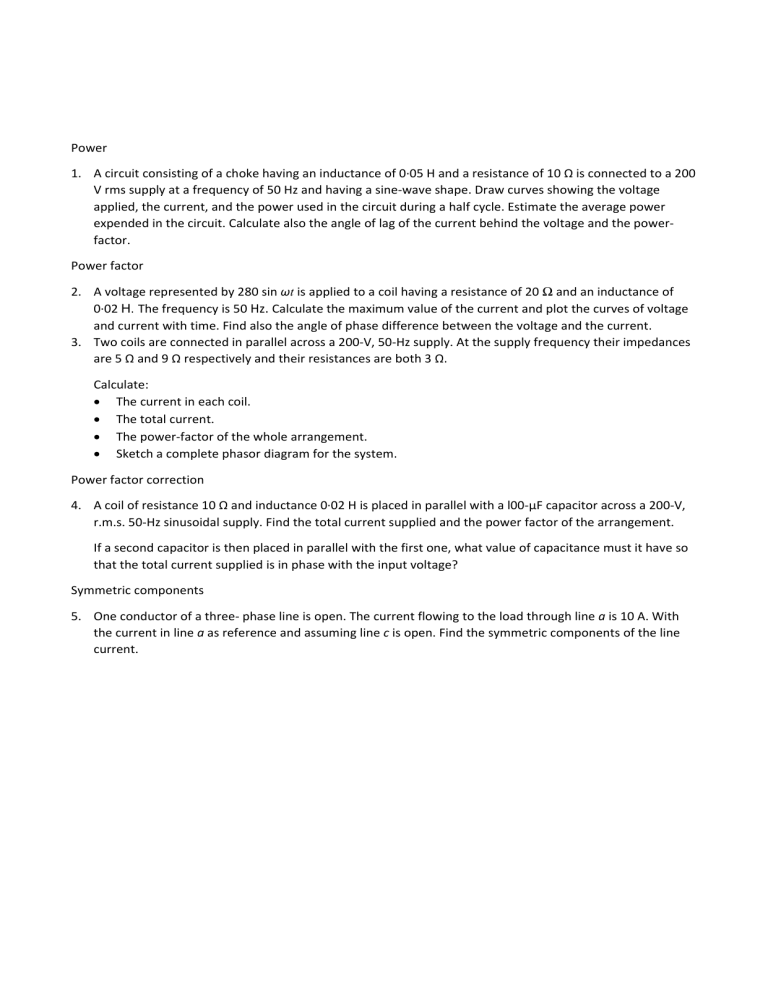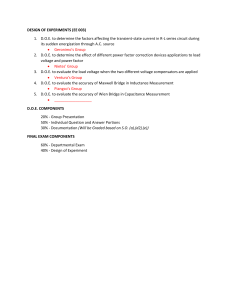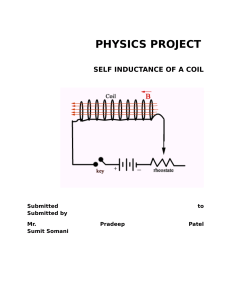Uploaded by
Arshiya Shahina Pathan
Electrical Engineering Problems: Power, Power Factor, Circuits
advertisement

Power 1. A circuit consisting of a choke having an inductance of 0∙05 H and a resistance of 10 Ω is connected to a 200 V rms supply at a frequency of 50 Hz and having a sine‐wave shape. Draw curves showing the voltage applied, the current, and the power used in the circuit during a half cycle. Estimate the average power expended in the circuit. Calculate also the angle of lag of the current behind the voltage and the power‐ factor. Power factor 2. A voltage represented by 280 sin ωt is applied to a coil having a resistance of 20 Ω and an inductance of 0∙02 H. The frequency is 50 Hz. Calculate the maximum value of the current and plot the curves of voltage and current with time. Find also the angle of phase difference between the voltage and the current. 3. Two coils are connected in parallel across a 200‐V, 50‐Hz supply. At the supply frequency their impedances are 5 Ω and 9 Ω respectively and their resistances are both 3 Ω. Calculate: The current in each coil. The total current. The power‐factor of the whole arrangement. Sketch a complete phasor diagram for the system. Power factor correction 4. A coil of resistance 10 Ω and inductance 0∙02 H is placed in parallel with a l00‐μF capacitor across a 200‐V, r.m.s. 50‐Hz sinusoidal supply. Find the total current supplied and the power factor of the arrangement. If a second capacitor is then placed in parallel with the first one, what value of capacitance must it have so that the total current supplied is in phase with the input voltage? Symmetric components 5. One conductor of a three‐ phase line is open. The current flowing to the load through line a is 10 A. With the current in line a as reference and assuming line c is open. Find the symmetric components of the line current.







